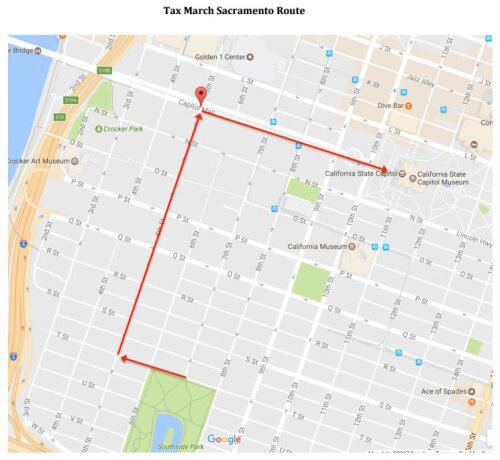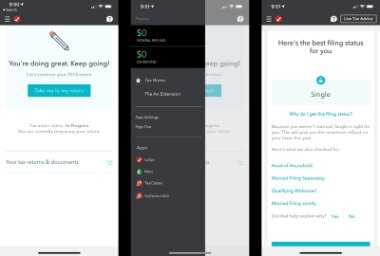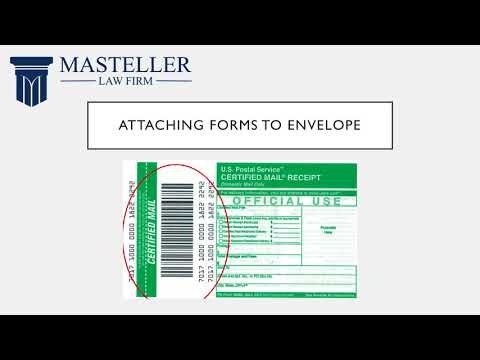06 Sep A Beginners Guide to Inventory Accounting
Contents:


It can also increase COGS and lessen net profit if more recently purchased goods are more expensive. Add the cost of newly purchased inventory during the period in question. As a result, COGS helps you determine the amount of gross profit made in one or more sales.
The software platform should account for any slight discrepancies if the actual value is given on the purchase invoice. To benefit from Cost of Sale accounting; purchasing, inventory and accounting processes need to be tightly integrated, and ideally all operate within the same software platform. Through a single configuration, accurate data can be accessed in real-time, since transactions are automated and opportunities for error are reduced. A key element to knowing your real-time profitability and cash-flow levels is tracking your Cost of Sale or Cost of Goods Sold . The net sale amount less the cost of sale gives you your gross profit. A company may use either a periodic inventory system or perpetual inventory system to maintain its inventory records.
Inventory Accounting Features for a Competitive Edge
Instead of tying up money in slow-moving notes receivable, you can keep it as cash and use it for more productive things like paying down debt or improving the business. Inventory has a value – even before you do anything with it – and so it’s listed as an asset on your business balance sheet. But it can lose its value fast if it gets old, out of date, damaged, or the market price for that type of product drops.
All inventory sold will be listed under the COGS account in your income statement at the end of each business year. Because inventory is a business asset, accountants must consistently and appropriately use an acceptable, valid method for assigning costs to inventory to record it as an asset. Raw materials, work in progress, and finished goods remaining on-site should all be considered part of the inventory. A write-down occurs if the market value of the inventory falls below the cost reported on financial statements. A write-off involves completely taking the inventory off the books when it’s identified as no longer being of value to a business. The second process is simpler – you don’t see the cost component of a sale until you have received the purchase invoice.
When your supply begins to run low in late January, you turn to another supplier, who offers you a price of $5 per crystal, so on January 30, you purchase an additional 100 crystals at the new cost. For example, on January 2, 2020, you purchase 100 crystals from your regular supplier at a cost of $4 each. On January 15, you need to purchase an additional 100 crystals, but your regular supplier raised the price to $6 each. Accounting for inventory can be a complicated task, so accounting novices may want to consult with an experienced accountant or CPA for guidance. Suspend receiving and shipping operations during physical inventory. You’re just three simple steps from cutting your shipping costs and managing all your ecommerce in one place.
If you sell a small volume of high-priced items, you can use the specific identification method, in which you account for the cost and sale of each item individually. Cost flow assumptions may bear no resemblance to the actual physical movement of inventory. Both cost of goods sold and inventory valuation depend on accounting for inventory properly.
What Is the Difference Between Inventory and Accounts Receivable?
Average Cost • FIFO (First-in First-out) under FIFO, the first units acquired are assumed to be first units sold. Inventory accounting comes into play when you buy, use, and also hold in inventory identical goods at different prices. This leads to the question of how you account for the value of the inventory you have on hand versus the inventory you sold. There are different acceptable methods that you may choose for valuing inventory in these circumstances.

This is an obvious statement for those who sell end-use products such as skateboards or alarm clocks, but it also relates to manufacturers that supply other businesses. Your inventory is your lifeblood, so it’s essential you manage it accordingly. When you don’t sell enough products, your days might be numbered. When you sell a lot, but aren’t able to restock, you will also take a financial hit.
Best Accounting Software for Startups: ZarMoney provides all-in-one solution
To determine the cost of goods sold in any accounting period, management needs inventory information. An inventory management system such as TranZact can help you simplify the inventory accounting process by accurately tracking inventory levels and keeping a tab on the cost of goods sold. Each inventory accounting method has its advantages and disadvantages, and the choice of method can affect a business’s financial statements, tax liabilities, and profitability.

Say, for instance, a company produces and sells an item that is steadily losing value but the inventory accounting doesn’t accurately record this value decrease, this can result in an inflated company valuation. And for businesses with complex production processes, inventory accounting can become much more involved and industry-specific. Whether you’re manufacturing items or purchasing products from a supplier for resale, it’s essential that inventory be accounted for properly.
Inventory accounting: costing methods
Equipment and supplies you’ve bought to run your business, such as work tools, vehicles and stationery, typically aren’t treated as inventory. A work-in-progress is a partially finished good awaiting completion and includes such costs as overhead, labor, and raw materials. Financial Accounting Accounting for Inventory Chapter Six Methods of Inventory Costing FIFO (First-in First-out) advantages – ► Reports current cost for Ending Inventory ► Reports higher Net Income. Find opportunities for businesses owned by women and people of color. Harold Averkamp has worked as a university accounting instructor, accountant, and consultant for more than 25 years. He is the sole author of all the materials on AccountingCoach.com.
With the LIFO accounting method, companies take the items received last and sell or ship those first. While LIFO inventory can prevent perishable items from going bad, unfortunately, it’s not a good indicator of ending inventory valuation. Typically, businesses will only incorporate the LIFO method if the prices of their inventory are subject to increase; by moving them over to COGS, companies can report lower profit levels to secure lower taxes. Those tax implications are a reason why LIFO methods are not permitted as an accounting method in may regions, countries, and industries. Weighted average is used to assign the average cost of production to a given product. This method is commonly utilized when inventory items are so intertwined you’re unable to assign a specific cost to an individual unit .
This article will discuss what inventory accounting is and how it works. Other topics will include pros and cons, cost of sale explanation, inventory accounting methods, and more. A disadvantage of LIFO is the effect it has on the balance sheet.
Weighted Average Accounting Method – Companies opting for the weighted average method have just one inventory layer. They also roll the cost of new inventory purchases into the cost of existing inventory to determine a new weighted average cost that is readjusted as more inventory is purchased or manufactured. FIFO Inventory Accounting Method – When using the FIFO method, accountants assume the items purchased or manufactured first are used or sold first, so the items remaining in stock are the newest ones. The FIFO method aligns with inventory movement in many companies, which makes it a common choice.
- Grant Gullekson is a CPA with over a decade of experience working with small owner/operated corporations, entrepreneurs, and tradespeople.
- Manufacturers keep track of raw materials, work-in-process, and finished goods inventory.
- These improvements will then help you make smarter, more focused business decisions.
- Inventory accounting is the valuation of inventory products for resale.
There may be situations where it is not possible to conduct a physical count to arrive at the ending inventory balance. If so, the gross profit method or the retail inventory method can be used to derive an approximate ending balance. If Robert uses LIFO to determine the cost of his inventory, the first necklace sold will be priced at $30, even if it came from the previously ordered stock. Following the last-in, first-out method, the first 50 necklaces would be assigned the cost of $30, while the following 100 necklaces sold would be priced at $25. Say Robert runs a jewelry shop and uses the LIFO costing method to manage his inventory. Later, he chooses to buy another 50 silver necklaces, but this time, the price has gone up to $30 per item.
Additional Inventory Accounting Issues
Purchases of merchandise are recorded in one or more Purchases accounts. Users are able to fully customize and configure the platform to meet precise accounting and inventory requirements. Inventory accounting is an important part of the inventory puzzle. It’s simple to work out.You don’t have to do as many calculations or track costs as closely.
There are a myriad of bookkeeping tasks required to stay on top of your inventory management. Valuation is based on how much the specific item cost you to make or procure. AVCO assumes that more and less expensive stock will balance out eventually. But there’s a chance you’ll end upmaking a loss on expensive items.
Instead it uses the total cost of your inventory to work out an average price. When you sell it, the cost of the inventory that’s sold gets recorded as an expense on your income statement. Businesses calculate how much it costs to sell their products and deduct those costs from their taxes. Large businesses with expansive inventory would of course find it extremely difficult if not physically impossible to count every item in their warehouses once a month. Likewise, many small businesses would most likely have neither the need nor resources to invest in a point-of-sale system for use in a perpetual inventory system. From a customer service perspective, keeping accurate inventory records ensures that businesses have in stock the products their shoppers need, when they need them.
What you need to know about SBTi’s new FLAG target and your … – GreenBiz
What you need to know about SBTi’s new FLAG target and your ….
Posted: Tue, 14 Feb 2023 08:00:00 GMT [source]
Inventory can be any physical property, merchandise, or other sales items that are held for resale, to be sold at a future date. Departments receiving revenue (internal and/or external) for selling products to customers are required to record inventory. LIFO Inventory Accounting Method – Accountants who opt for the LIFO method assume items purchased or manufactured last are sold first, so the items remaining in stock are the oldest. As such, this method does not follow most companies’ natural inventory flow and is banned by International Financial Reporting Standards.
What Is Inventory? Definition, Types, and Examples – Investopedia
What Is Inventory? Definition, Types, and Examples.
Posted: Sun, 26 Mar 2017 06:36:12 GMT [source]
Before we discuss how to optimize your accounting of inventory, it’s important to define our terms. The number of units available for sale is the sum of ending inventory units and net sales units. You divide the COGS your company has available for sale by the number of units that are currently available for sale. Inventory accounting can be time-consuming and difficult to keep track of. It also details the value of that inventory and how much the inventory is worth on the current market.
Freshbooks Another popular accounting software solution used by small businesses is Freshbooks, which offers many of the same invoicing and transaction-tracking features as QuickBooks. The main role of the accountant on a monthly basis is assigning costs to ending inventory unit counts. The basic concept of cost layering, which involves tracking tranches of inventory costs, involves the first in, first out layering system and the last in, first out system. A different approach is the assignment of a standard cost to each inventory item, rather than a historical cost.
Without sales the company’s cash remains in inventory and unavailable to pay the company’s expenses such as wages, salaries, rent, advertising, etc. Each time you buy inventory, the total cost will hit your income statement at once. Your profits will appear to fluctuate greatly even if your sales are consistent. Incash accounting, inventory goes straight on yourincome statement as an expense when you buy it.
To help prevent this, you can institute cycle counting under a perpetual system, in which you count a portion of your inventory every day until you cycle through the lot. It is easier and cheaper but does not provide you with real-time information. Inventory cycle covers all the stages of inventory management—from when goods are acquired until they are sold, including planning, procurement, receiving, storage, counting, shipping, and returns.
Inventory is also reviewed for slow-moving items and obsolescence to determine whether a reserve or write-off is required to fairly value the inventory in the financial statements. To follow up with the physical inventory counts, reconcile physical inventory counts of specific items to inventory items recorded in the books as perpetual inventory transactions. Some differences may relate to the cutoff date of items received and shipped before and after the physical inventory date that have not been recorded yet. Remember that course where you used T accounts to learn how to record accounting transactions with balancing debits and credits (double-entry accounting)? That’s when you or your fellow students may have been wondering, which of the following is not an inventory account?





No Comments